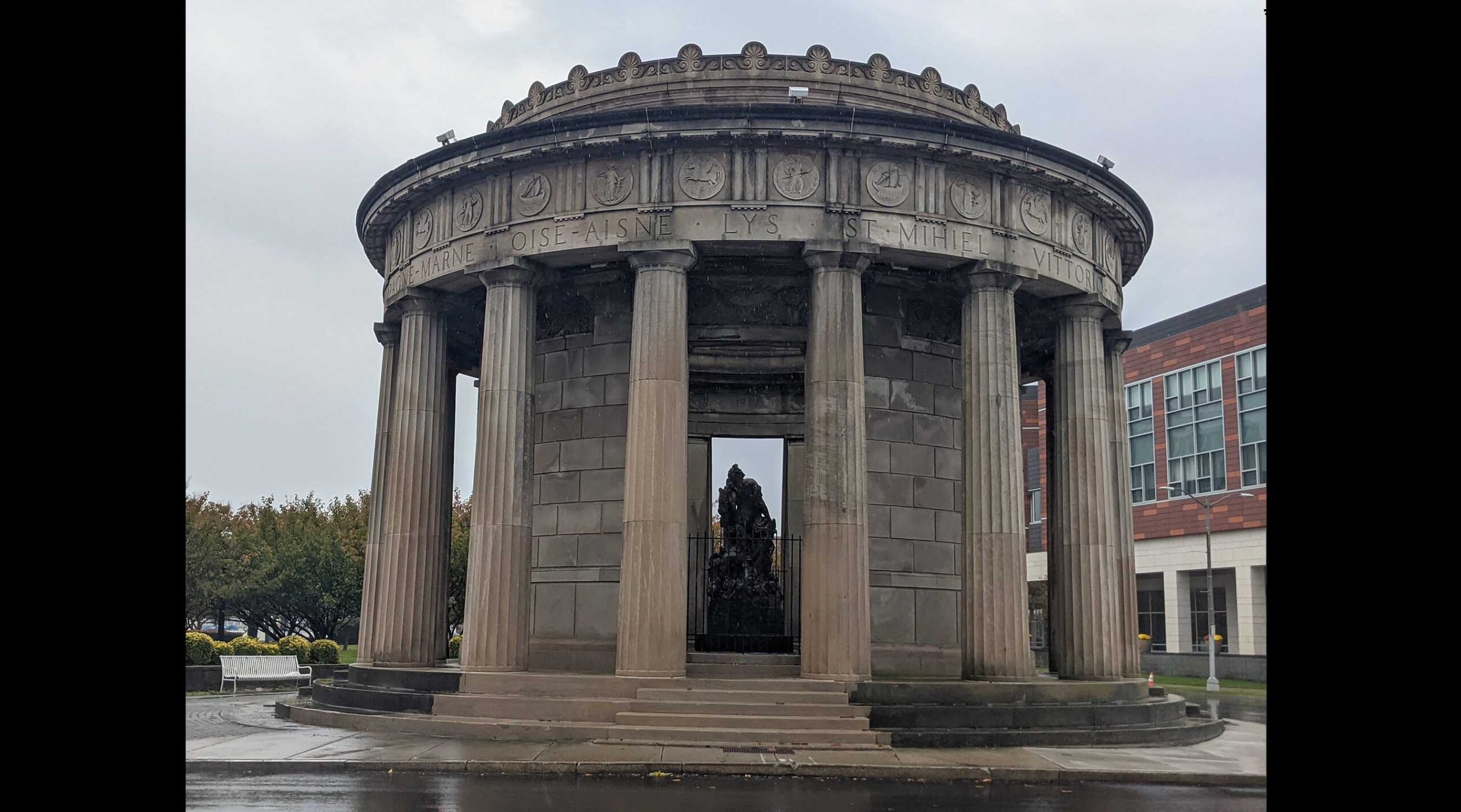 Built in the style of a circular Greek temple, the World War I Memorial has captured the hearts and minds of audiences across the eras in Atlantic City, New Jersey. Also known as the Greek Temple Monument, the memorial’s form and central feature highlight what it can look like for a landmark to become an attraction that resonates with audiences on multiple levels.
Built in the style of a circular Greek temple, the World War I Memorial has captured the hearts and minds of audiences across the eras in Atlantic City, New Jersey. Also known as the Greek Temple Monument, the memorial’s form and central feature highlight what it can look like for a landmark to become an attraction that resonates with audiences on multiple levels.

From Decorative Greek Temple to World War I Memorial
 Originally planned as a decorative addition to Atlantic City in the early 1900s, delays associated with the outbreak of World War I would see the Greek Temple Monument repositioned as a memorial connected to the sacrifices made in the Great War. Erected between 1922 and 1923, the World War I Memorial consists of 16 large Doric columns in a Greek Temple design, with four entrances that roughly correspond to the cardinal directions.
Originally planned as a decorative addition to Atlantic City in the early 1900s, delays associated with the outbreak of World War I would see the Greek Temple Monument repositioned as a memorial connected to the sacrifices made in the Great War. Erected between 1922 and 1923, the World War I Memorial consists of 16 large Doric columns in a Greek Temple design, with four entrances that roughly correspond to the cardinal directions.
Specifically dedicated to the residents of Atlantic City who fought in World War I, in the center of the structure is a 9-foot sculpture by Frederick McMonnies titled “Liberty in Distress” that was installed in 1929. It portrays a nude Lady Liberty draped in a French flag and cradling a dying male soldier. In her left hand, she is holding a broken sword while a dog and rooster stand around her feet. The names of battles in which people from Atlantic City fought are featured along with the top of the memorial. Additionally, four medallions (Army, Navy, Marines, and Aviation) are featured around the circumference of the frieze.
In 1961, the City traffic supervisor recommended moving the World War I Memorial to improve the flow of traffic. The costs associated with a move or the destruction of the temple proved to be too onerous. In the 1990s, efforts were made by the City’s Urban Beautification Committee to improve the monument and its site. In 1998, the Greek Temple Monument and “Liberty in Distress” were rededicated, enabling it to become an essential element of the community.
Listed in the National Register of Historic Places in 1981, the memorial resides on the edge of O’Donnell Park with a major thoroughfare of Atlantic City on the other side, highlighting how the city and landscape have changed and in some ways have been around it.

Equal Parts Memorial and Inspiration
 Measuring 124 feet around and featuring the open-air stone building design that looks like it is from another era, the World War I Memorial is equal parts memorial and inspiration. By connecting audiences to the past of the region as well as to an aesthetic that resonates across cultures, the monument highlights what it can mean for a landmark to appeal to the hearts and minds of audiences of all types.
Measuring 124 feet around and featuring the open-air stone building design that looks like it is from another era, the World War I Memorial is equal parts memorial and inspiration. By connecting audiences to the past of the region as well as to an aesthetic that resonates across cultures, the monument highlights what it can mean for a landmark to appeal to the hearts and minds of audiences of all types.

